Ryogoku, the heart of Japan’s storied sumo tradition, beckons visitors to enjoy its vibrant culture. A guided walking tour promises an insider’s glimpse into the daily lives of sumo wrestlers, culminating in a savory chanko-nabe lunch – the very sustenance that fuels these athletes. From the iconic Ryogoku Kokugikan arena to the historic Ekō-in Temple, this unique experience unveils the captivating world of sumo and leaves you eager to explore further.
Key Points
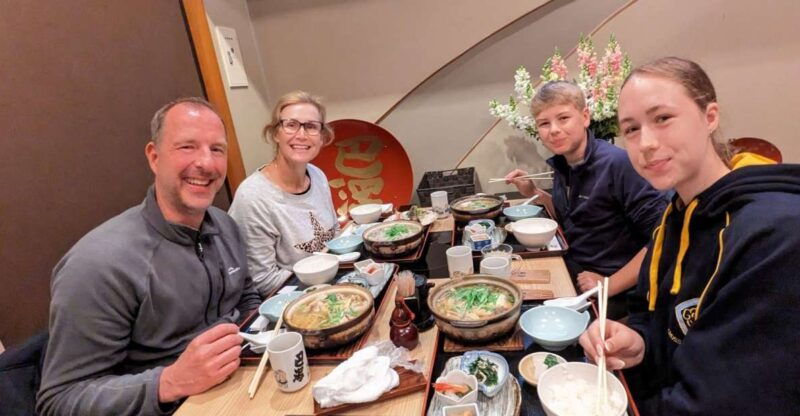
- Explore the cultural heritage of sumo wrestling in Ryogoku, the heart of this ancient Japanese tradition.
- Visit the iconic Ryogoku Kokugikan, the prestigious venue for sumo tournaments, and learn about its architecture and rituals.
- Experience the nostalgic atmosphere of Ryōgoku Edo NOREN, a restored Edo-era commercial district, to complement the insights gained at the sumo stadium.
- Gain insights into the spiritual significance of Ekō-in Temple, which is intertwined with the sumo tradition.
- Observe the intense training regimen and nutrition of sumo wrestlers at the prominent Kasugano-beya stable.
Exploring Ryogoku: A Sumo Town Adventure
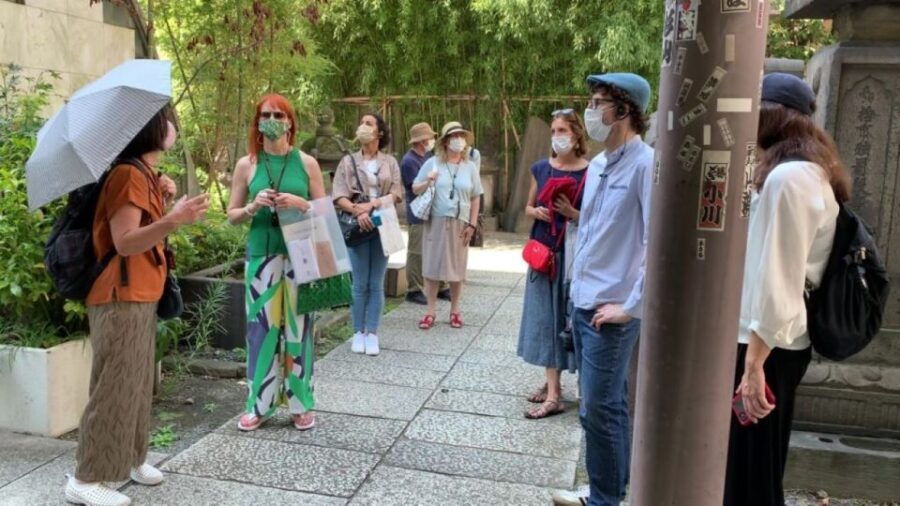
As the heart of Japan’s ancient sumo tradition, Ryogoku offers visitors a unique glimpse into the rich cultural heritage of this centuries-old sport.
During the guided walking tour, guests explore the iconic Ryogoku Kokugikan, the sacred Ekō-in temple, and the private Kasugano-beya sumo stable.
Along the way, they learn about the daily lives and training routines of sumo wrestlers.
The tour provides a comprehensive understanding of sumo’s significance in Japanese culture, from its Shinto origins to its role in fostering community and camaraderie among the athletes.
Here are more experiences we've reviewed in Tokyo
Uncovering the Ryogoku Kokugikan: The Heart of Sumo
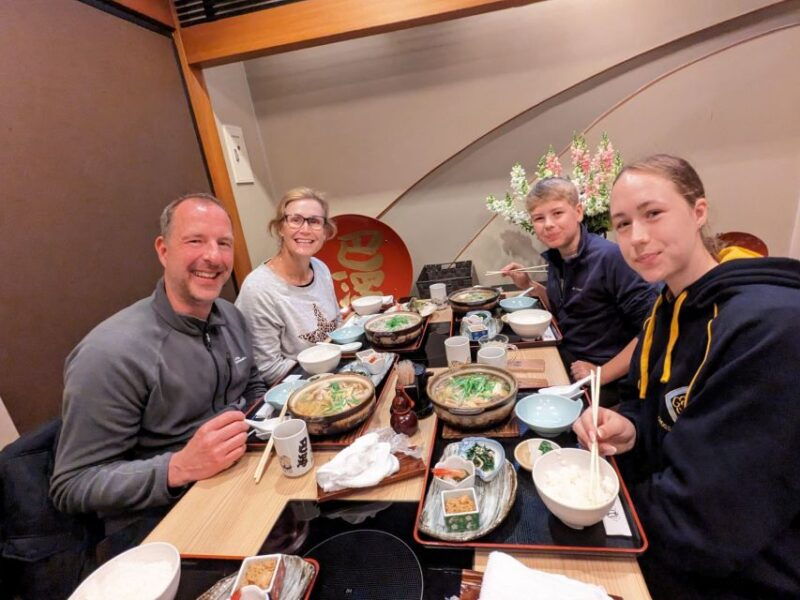
The Ryogoku Kokugikan stands as the iconic heart of sumo wrestling in Japan, a grand arena that has hosted the sport’s most prestigious tournaments for over a century.
Visitors to the guided walking tour will have the opportunity to explore this revered venue, learning about its storied history and the unique traditions that make sumo such an integral part of Japanese culture.
The tour covers:
- Insights into the arena’s architecture and design, reflecting the sport’s deep-rooted heritage.
- Explanations of the rituals and ceremonies that precede each sumo match.
- Discussions on the role of the Kokugikan in shaping the careers of legendary sumo wrestlers.
Strolling Through Ryōgoku Edo NOREN: Taking in Edo-Era Charm
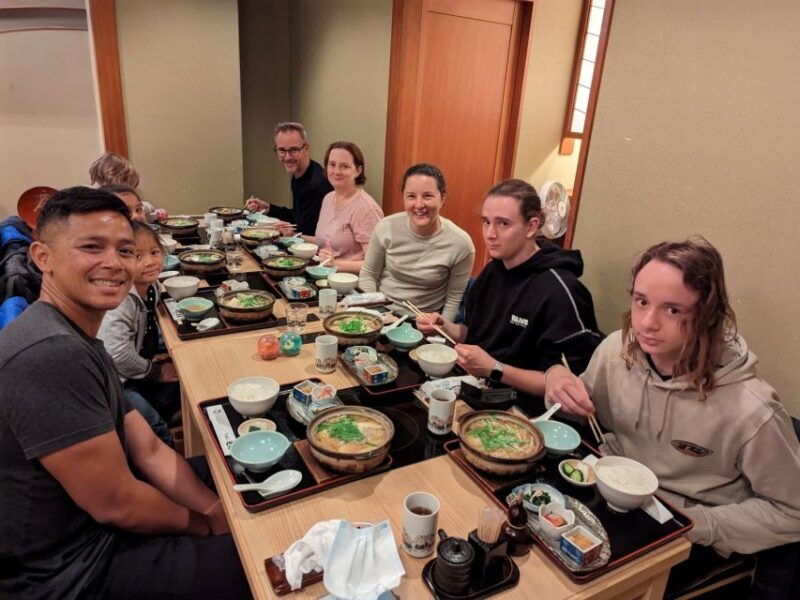
After exploring the iconic Ryogoku Kokugikan, the walking tour leads participants to the captivating Ryōgoku Edo NOREN.
This restored Edo-era commercial district transports visitors back in time. Visitors stroll past the quaint wooden buildings, traditional storefronts, and charming alleyways.
The guide shares insights about the area’s history and cultural significance. Participants enjoy the nostalgic atmosphere, imagining the bustling commercial activities that once thrived here.
The Ryōgoku Edo NOREN offers a unique opportunity to experience the charms of old Tokyo, complementing the insights gained at the renowned sumo stadium.
Encountering Ekō-in: The Spiritual Center of Ryogoku
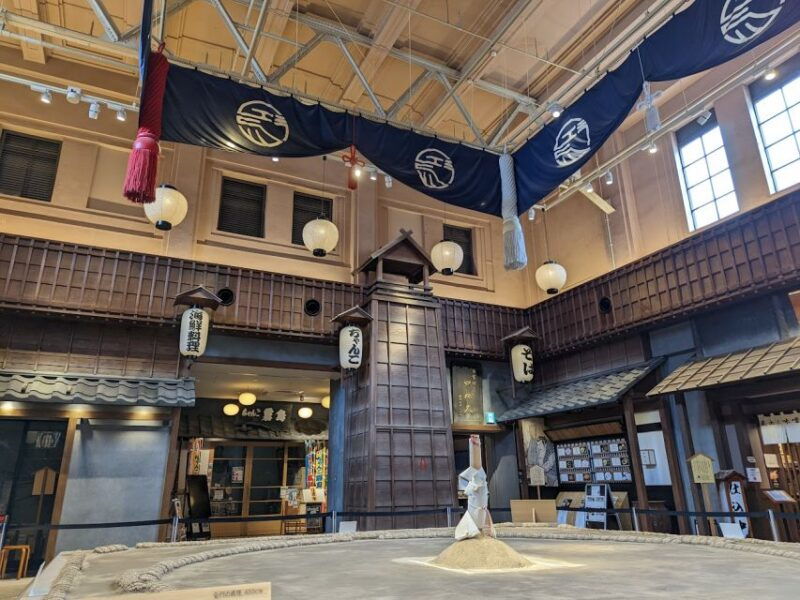
Leaving the charming Edo-era district behind, the tour now heads to Ekō-in, a spiritual center that holds deep significance in Ryogoku’s history.
This Buddhist temple serves as a hub for sumo-related ceremonies and rituals. Visitors can expect to:
- Witness the serene atmosphere and admire the intricate architecture of the temple.
- Learn about the religious practices and beliefs that are deeply intertwined with the sumo tradition.
- Understand the role Ekō-in plays in preserving the spiritual heritage of Ryogoku’s sumo community.
The tour’s exploration of this sacred space provides a well-rounded understanding of the multifaceted nature of Ryogoku’s cultural landscape.
More Great Tours NearbyVisiting Kasugano-beya Sumo Stable: Witnessing Wrestler Training
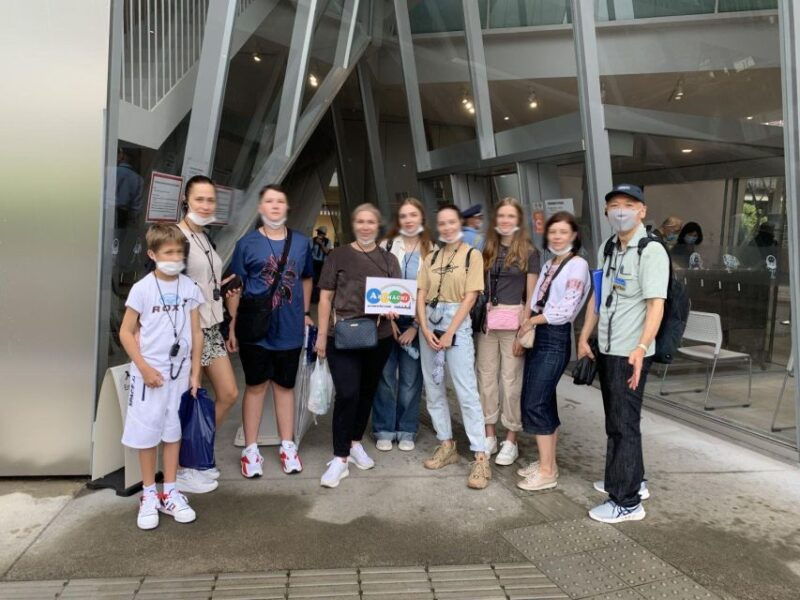
Next, the tour group heads to Kasugano-beya, one of the prominent sumo stables located in Ryogoku.
They’re greeted by the stable’s coach, who provides an insider’s look at the wrestlers’ intense training regimen. The group observes the athletes’ rigorous exercises, including pushing, grappling, and strengthening techniques.
They learn how the wrestlers’ diet and lifestyle, centered around the nutritious chanko-nabe, fuel their demanding training. The guide explains the stable’s role in nurturing sumo’s traditions and cultivating the next generation of champions.
Witnessing the wrestlers’ dedication and discipline offers a profound appreciation for the sport’s cultural significance.
Into exploring Tokyo on foot? Check out these other walking experiences we've looked at
- Tokyo Shibuya & Harajuku Walking Tour With a Guide
- Tokyo: Private & Personalized Walking Tours With Local Guide
- Enoshima Island: Private Walking Tours With Local Guide
- Tsukiji: Outer Market Walking Tour & Sake Tasting Experience
- Tokyo: Kimono Dressing, Walking, and Photography Session
- Nippori Walking Through Tokyo’S History With Your Guide
Savoring Chanko-nabe: The Nutritious Staple of Sumo Wrestlers
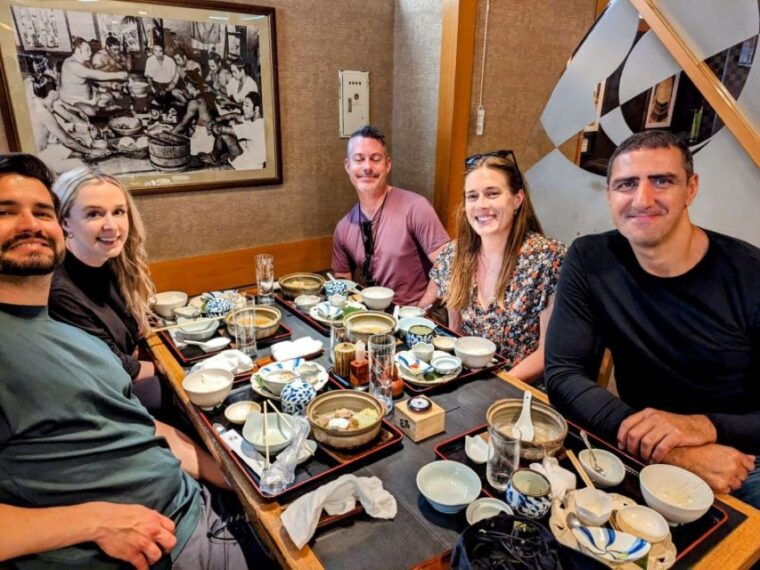
As the group finishes their visit to Kasugano-beya, they make their way to a local restaurant to savor the renowned chanko-nabe, the nutritious hot-pot dish central to sumo wrestlers’ diet.
Chanko-nabe’s preparation involves:
- Simple cooking methods suitable for stable life.
- Balanced nutrition to support weight gain and muscle building.
- High hygiene standards due to the communal cooking and dining.
This shared experience promotes teamwork and solidarity among the wrestlers.
The group enjoys the hearty, flavorful meal, gaining insight into the discipline and dedication required to excel in the sport of sumo.
Cultural Insights: Sumo’s History and Significance
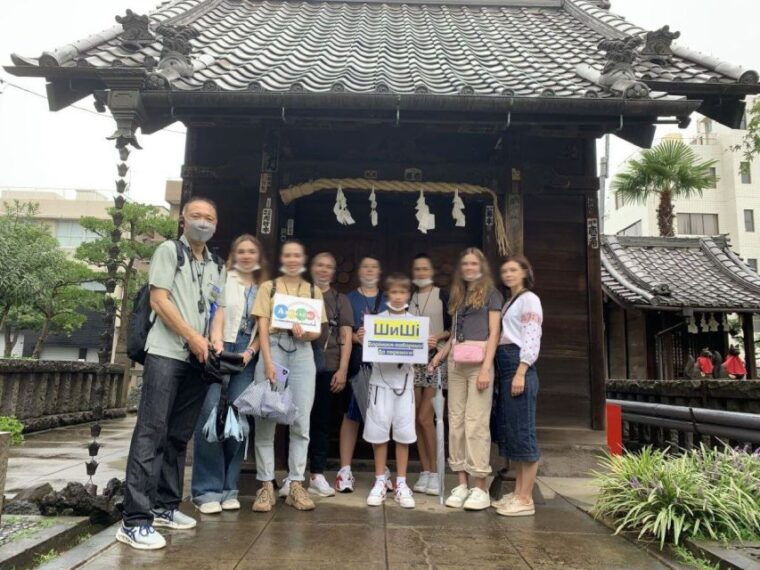
Although sumo wrestling has its origins over 1,600 years ago, the sport maintains a deeply rooted cultural significance in Japan.
Steeped in Shinto traditions, sumo is viewed as a sacred ritual, with wrestlers considered living embodiments of the gods.
The Ryogoku neighborhood, known as "Sumo Town," has long been the heart of the sport, home to stables where wrestlers train and live communally.
Visitors can learn about the wrestlers’ rigorous daily routines and the intricate rules and ceremonies that govern the sport.
Exploring this historic district provides a unique window into Japan’s rich cultural heritage.
Feedback From Satisfied Customers: a Memorable Experience
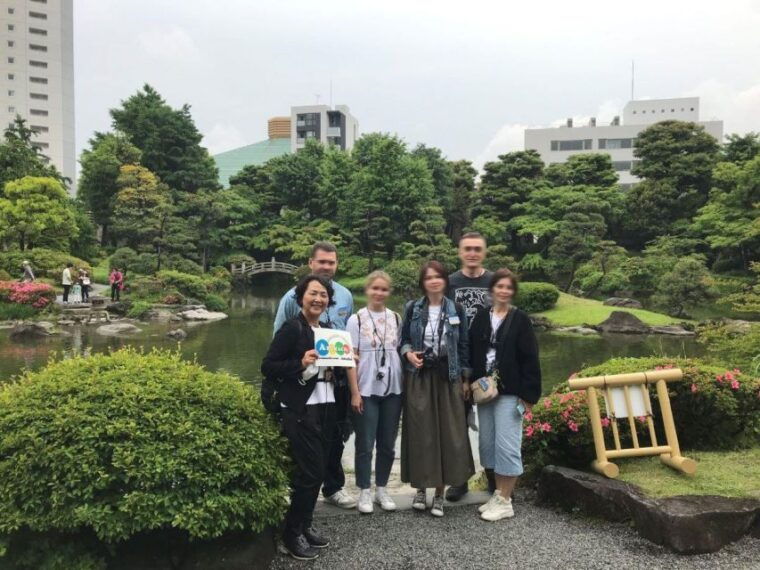
Customers who’ve experienced the Ryogoku Walking Tour with Chanko-nabe Lunch have consistently shared positive feedback, highlighting the tour’s ability to provide a memorable and enriching experience.
Reviews praise the knowledgeable guides, whose expertise enhances understanding of sumo and Japanese culture. The enjoyable chanko-nabe dining experience is also a highlight, with guests appreciating the insights into the wrestlers’ dietary practices.
Plus, the tour’s exploration of the Ryogoku area, including its cultural landmarks, further contributes to the overall satisfaction of participants.
- Knowledgeable guides enhancing cultural understanding
- Enjoyable chanko-nabe dining experience
- Interesting insights into the Ryogoku area
Frequently Asked Questions
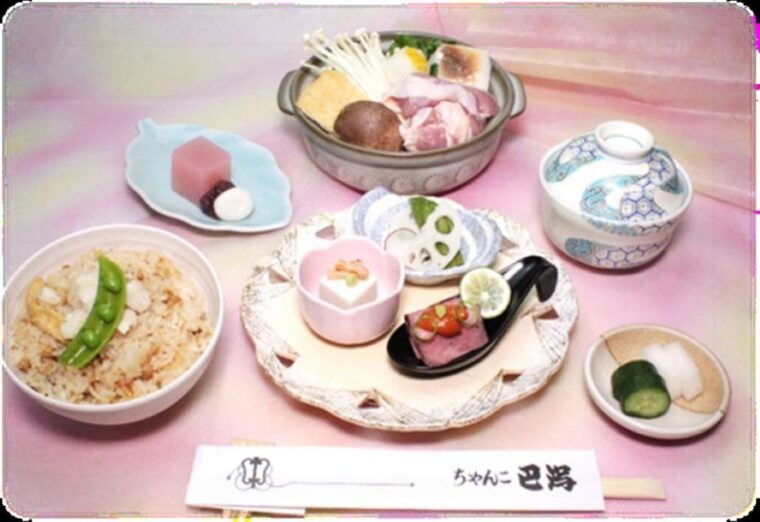
Can I Take Photos During the Sumo Wrestler Training Session?
No, visitors are generally not allowed to take photos during sumo wrestler training sessions. The stables maintain a strict policy to respect the wrestlers’ privacy and focus during their intense training routines.
Is the Tour Wheelchair Accessible?
The tour is not wheelchair accessible. The itinerary includes walking tours through historic buildings and restaurants, which may have steps or narrow spaces that could be challenging for wheelchair users. Guests with mobility issues should consider an alternative tour option.
Can I Request a Vegetarian or Gluten-Free Option for the Chanko-Nabe?
You can request vegetarian or gluten-free options for the chanko-nabe. The tour provider will accommodate dietary restrictions with advance notice. However, the standard chanko-nabe dish contains meat, so a modified version may be required.
Do I Need to Bring Any Special Equipment or Clothing for the Tour?
The tour doesn’t require any special equipment or clothing. Comfortable walking shoes are recommended, and the guide will provide any necessary gear. Participants should dress appropriately for the weather and feel free to ask the guide about any special considerations.
Is It Possible to Extend the Tour or Add Additional Activities?
It’s possible to extend the tour or add additional activities, though this would require booking a private tour or arranging separate arrangements. The standard 3.5-hour tour includes the scheduled highlights and can’t be modified without additional planning.
The Sum Up
This guided walking tour offers a unique opportunity to take in the vibrant sumo culture of Ryogoku. Visitors can explore significant landmarks, witness the intense training of sumo wrestlers, and savor the traditional chanko-nabe meal. The tour provides an authentic and memorable experience, allowing participants to gain deep insights into the rich history and significance of this revered Japanese sport.
You can check availability for your dates here:More Tour Reviews in Tokyo
- Tokyo: Gunma Scenic Day Trip with Fruit Picking, Crab Lunch
- From Tokyo: Mt. Fuji Spanish & English Tour
- Düsseldorf: Manga, mochi & more Düsseldorf’s Little Tokyo
- Mt. Fuji, Cherry Blossom & Shiba Sakura Pvt. Day Tour
- Private Sightseeing to Mt Fuji and Hakone with English Driver
- Ginza: Private Tokyo nights of Japanese Food for Family
Still browsing? Here are more Tokyo experiences we've covered recently
- Tokyo: Gunma Scenic Day Trip with Fruit Picking, Crab Lunch
- From Tokyo: Mt. Fuji Spanish & English Tour
- Düsseldorf: Manga, mochi & more Düsseldorf’s Little Tokyo
- Mt. Fuji, Cherry Blossom & Shiba Sakura Pvt. Day Tour
- Private Sightseeing to Mt Fuji and Hakone with English Driver
- Ginza: Private Tokyo nights of Japanese Food for Family
- Kickboxing & Body Training with EX-Pro Fighter
- Shimbashi Night Food Tour
- Kabukicho Tokyo Karaoke Booth
- Tokyo Morning Tour : Meiji Shrine, Asakusa and Fire Ritual
- Hidden Gem Food & Whiskey Night Tour near Roppongi
- Authentic Geisha Performance with Kaiseki Dinner in Tokyo
